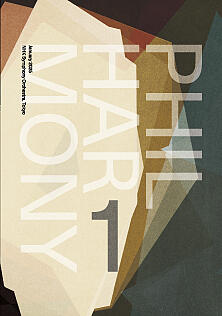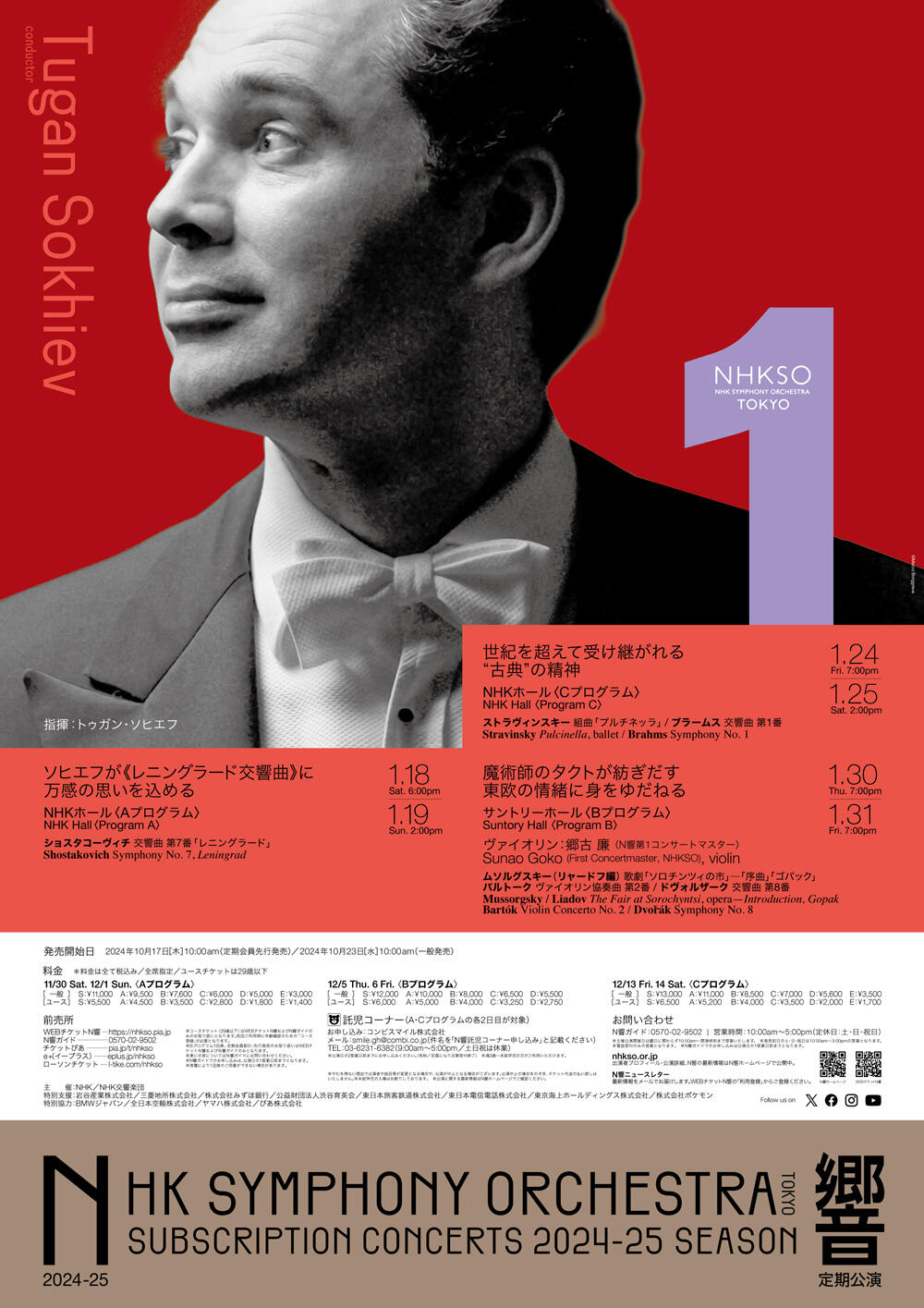- Home
- Concerts
- Subscription Concerts 2024-2025
- Program B
- No. 2030 Subscription (Program B)
No. 2030 Subscription (Program B)
Suntory Hall
Google Map Seating Chart
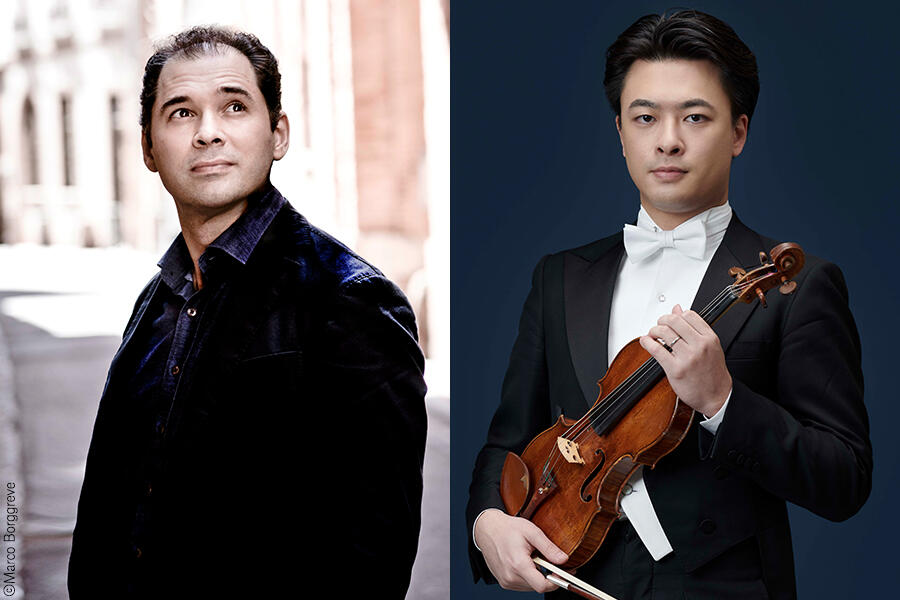
Program
Mussorgsky / Liadov / The Fair at Sorochyntsi, opera―Introduction, Gopak
During the second half of the 19th century, the classical music world saw an increasing momentum toward patriotism. Composers from Northern and Eastern Europe, Spain and Russia proudly drew inspiration from their people’s folk music, folktales, nature, history and so forth. And the Russian composer Modest Mussorgsky (1839–1881), a member of Saint-Petersburg-based circle The Mighty Handful (The Five), took an active role in the trend.
Mussorgsky is considered today a pioneer of musical modernism who influenced Debussy (1862–1918), but the former, a mostly-self-taught Sunday composer, had been underestimated in his lifetime. He died in poverty leaving some uncompleted works including the comic opera The Fair at Sorochyntsi based on a tale by the Ukrainian writer Nikolai Gogol. Mussorgsky began to conceive the libretto in 1874, to create a new opera for the Ukrainian bass Osip Petrov (1806–1878) who brilliantly sang as Varlaam in a performance of the composer's opera Boris Godunov the previous year. The preparation of the libretto and the composition were suspended several times before Mussorgsky’s death in 1881, mainly due to his struggle to set the Ukrainian speech patterns to music, his other ongoing compositions and Petrov’s passing. During today’s concert, the extracted two pieces will be performed with the posthumous orchestration by the Russian composer Anatoly Liadov (1855–1914), Rimsky-Korsakov’s pupil.
Set in the Ukrainian village Sorochyntsi (Gogol’s birthplace), the plot features Cherevik, a henpecked husband, and his daughter Parasya. The pastorally tuneful Introduction: A Hot Day in Little Russia leads to the opening bustling scene of large fair. Gopak is danced at the opera’s finale in celebration of Parasya’s marriage to a young peasant. The Gopak (Hopak) is a lively Ukrainian traditional dance originally performed by the Cossacks.
[Kumiko Nishi]
Bartók / Violin Concerto No. 2
Hungarian composer Béla Bartók (1881–1945) is also regarded as a forefather of ethnomusicologists nowadays: he traveled with wax cylinders in his hand to collect and study innumerable folk songs and dances mainly of Eastern Europe. This research brought richness, uniqueness and consequently modernism to his classical outputs.
The Violin Concerto No. 2 dates from the prime of Bartók’s compositional life. Contemporary with his representative piece Music for Strings, Percussion and Celesta (1936), the concerto was written in 1937–1938 during his final years in Europe before leaving for good for the United States to protest against the Nazism. It was a work commissioned by the Hungarian violinist Zoltán Székely, a long-term recital partner of Bartók as a pianist.
The concerto takes the Classical three-movement form to Székely’s wishes, although on macro- and micro-levels it shows not a few signs of Bartók’s original idea of composing a vast set of variations in single movement. Perpetually varying materials is in truth his favorite technique rooted in his familiarity with folk music. The opening movement in sonata form starts with the extended first theme on the solo violin, evoking village fiddlers in Transylvania and verbunkos, a Hungarian dance typically comprising contrastive slow dotted-rhythm section and fast virtuosic section. Bartók famously builds the cheerless second theme, also introduced by the soloist, employing all the twelve notes in octave without any repetition. It was allegedly to show Arnold Schönberg (1874–1951), the inventor of the ground-breaking twelve-tone technique, that “one can use all twelve tones and still remain tonal.” The middle movement has the solo violinist give the tuneful theme at the outset, followed by its six variations of diverse characters. The dancy final movement, again in sonata form, is actually a variation of the opening movement: both the bouncing first theme in waltz time and the calmer twelve-note second theme are variants of the opening movement’s fundamental materials. The splendid conclusion with the solo violinist’s great panache was added by Bartók at Székely’s request after the completion of the composition.
[Kumiko Nishi]
Dvořák / Symphony No. 8 G Major Op. 88
Antonín Dvořák (1841–1904) was born on the outskirts of Prague, Czech then ruled by the Austrian Empire. Having a father who was a butcher-innkeeper and zither player, Dvořák as a boy received violin and vocal lessons at the local school before starting to perform in village band and church. After studying music in Prague, he made a living as a viola player while composing. During the period when he was a member of the orchestra of the newly-opened Provisional Theatre in Prague, he had opportunities to perform under the baton of Bedřich Smetana (1824–1884), a composer considered today to be the father of the Czech nationalist school in music.
The year 1875 was a turning point for Dvořák. The obscure musician in his mid-thirties in need, won the Austrian State Grant for talented young artists for five years in a row starting then. This largely aided him not only financially but also artistically, as Johannes Brahms (1833–1897) who served a jury from the second year spotted Dvořák’s ability and originality. The German composer recommended his publisher Simrock issuing works by this promising Czech man who, thanks to that, quickly earned fame throughout Europe with his printed Slavonic Dances (inspired by Brahms’s Hungarian Dances). Among all Dvořák absorbed from Brahms’s oeuvre is the structural and formal coherence, of which the former made the most in his Symphony No. 7 in D minor (1885) of serious and stormy character written after Brahms’s Symphony No. 3 (1883).
Dvořák’s next Symphony No. 8 in G major (preceding celebrated No. 9 “From the New World”) is marked by sunniness, tunefulness and a looser structural design. It is also the symphony where the composer’s Bohemian identity vividly comes to the fore. He wrote it swiftly from August to November in 1889 in his summer house surrounded by the beautiful nature at Vysoká in the suburbs of Prague.
No. 8’s opening movement in free sonata form has an introductory flute twittering. It leads us to the cheerful first theme on violas and cellos, followed by the slightly melancholic second theme in B minor given by the winds. The English horn, a principal role in the New World Symphony, is used only in this movement in a flash but effectively. The next slow movement is often likened to Beethoven’s Pastorale Symphony No. 6. Its ever-changing atmospheres and the woodwinds’ birdsong-like phrases indeed conjure up rural sceneries. The third movement, headed “grazioso (gracefully) ,” is in the style of waltz rather than scherzo. Starting in 3/8 meter in G minor, it has a spirited G-major coda in 2/4 meter. The finale in G major, opened by the cheery trumpet fanfare, is a set of variations. Stated by the cellos, the theme is derived from the above-mentioned flute twitter heard at the symphony’s opening. This balmy theme is followed by the eighteen variations and the festive coda.
[Kumiko Nishi]
[Encore]
January 30:
Bartók / 44 Duos for Two Violins
- No.29 Újévköszöntő [2] (New Year's Greeting [2]),
No.30 Újévköszöntő [3] (New Year's Greeting [3])
January 31:
Bartók / 44 Duos for Two Violins
- No.28 Bánkódás (Sorrow)
1st Violin: Sunao Goko
2nd Violin: Kota Nagahara
Artists
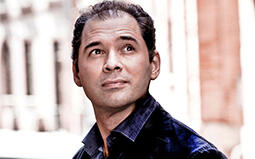 ConductorTugan Sokhiev
ConductorTugan Sokhiev
In 2025, the NHK Symphony Orchestra will again start the year under the baton of Tugan Sokhiev. Since 2008, he has been continuously making guest appearances, and has been unfolding a variety of musical adventures based on an extremely close relationship of trust with the orchestra. He resigned the position of Music Director of both the Bolshoi Theatre and the Orchestre national du Capitole de Toulouse in the spring of 2022, and it was in January 2023 when he stood on the podium of the NHK Symphony Orchestra after an absence of three years, and then, in January 2024, he vividly presented three completely different programs of French, Russian and German repertoire with the orchestra.
Tugan Sokhiev, who is in his 40s, continues to strive energetically in concerts and operas. He was born in 1977 in Vladikavkaz in North Ossetia of the former Soviet Union, and studied conducting with Ilya Musin and Yuri Temirkanov at the St. Petersburg Conservatory. He excels in expressing passion and dynamism in Russian repertoire, and the sophisticated nature and colors particular to French music, but also he is masterly in demonstrating the meticulous structure of German and Austrian repertoire as he served as Principal Conductor of the Deutsches Symphonie-Orchester Berlin in the 2010s. He has also visited Japan with the Wiener Philharmoniker in November 2023, and the Münchner Philharmoniker in November 2024.
He continues to conduct three programs this season. Placing the composers he has worked with the NHK Symphony Orchestra until now as the core, works by Mussorgsky and Stravinsky are performed for the first time. He also features Russian and east European composers, but will finally work on Brahms’ Symphony No. 1, the work which had to be cancelled during the pandemic. We will enjoy an intense and exciting opening of the new year.
[Takaakira Aosawa, music critic]
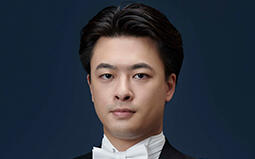 ViolinSunao Goko (First Concertmaster, NHKSO)
ViolinSunao Goko (First Concertmaster, NHKSO)
Sunao Goko, who won the Tibor Varga International Violin Competition, as well as the Audience Award and Contemporary Music Award in 2013, is one of the young violinists attracting the most attention both at home and abroad.
He was born in Tagajo-City, Miyagi Prefecture in 1993, and won 1st prize in the 11th Yehudi Menuhin International Competition for Young Violinists (the youngest winner in the competition’s history) in 2006. Since his debut in December 2007, he has worked with leading Japanese orchestras under the batons of Gerhard Bosse, François-Xavier Roth, Kazuyoshi Akiyama, Michiyoshi Inoue, Tatsuya Shimono, Kazuki Yamada and Kentaro Kawase. Over three years beginning 2017 he worked on a series to perform the complete Beethoven violin sonatas. He plays a 1682 Stradivarius ‘Banat’ which has been kindly on loan to him by a courtesy of a private owner. He won the 29th Idemitsu Music Award in 2019.
After serving as Guest Concertmaster of the NHK Symphony Orchestra, he has assumed the position of 1st Concertmaster of the orchestra in April 2024, at the same time, he often appears with the orchestra as a soloist, and in fact in the January 2024 Subscription Concert, he was a solo violinist for Mozart’s Sinfonia Concertante for Violin and Viola under the baton of Tugan Sokhiev.
Download
Ticket
Program B
No. 2030 Subscription (Program B)
Suntory Hall
Google Map
Seating Chart
Single Tickets Release Date
Pre-sales for Subscribers:Thursday, October 17, 2024
*about subscribers
Sale to General Public:Wednesday, October 23, 2024
Price
| S | A | B | C | D | |
|---|---|---|---|---|---|
| Ordinary Ticket | 12,000 | 10,000 | 8,000 | 6,500 | 5,500 |
| Youth Ticket | 6,000 | 5,000 | 4,000 | 3,250 | 2,750 |
Seating chart Enlarge Print PDF
*tax included
*Subscribers receive a 10% discount (Available at NHKSO WEB Ticket and N-Kyo Guide)
*For wheelchair-accessible seats, please refer to the N-Kyo Guide
Youth Tickets
Youth Tickets are great options for those of 29 years old and younger
Subscription tickets
Release Date
ANNUAL SUBSCRIPTION TICKETS
Mon., July 15, 2024 10:00am
[For Subscribers: Sun., July 7, 2024 10:00am]
Where to buy
NHKSO WEB Ticket | Thursday, January 30 (In English / Seats not selectable)
NHKSO WEB Ticket | Friday, January 31 (In English / Seats not selectable)
NHKSO WEB Ticket (In Japanese only / Seats selectable)
N-Kyo Guide (Purchase by telephone only)
Broadcast
 NHK-FMNo. 2030 Subscription (Program B)
NHK-FMNo. 2030 Subscription (Program B)
Saturday, Feb 8, 2025 4:00PM - 5:50PM
Program:
Mussorgsky / Liadov / The Fair at Sorochyntsi, opera―Introduction, Gopak
Bartók / Violin Concerto No. 2
Dvořák / Symphony No. 8 G Major Op. 88
Conductor:Tugan Sokhiev
Violin:Sunao Goko (First Concertmaster, NHKSO)
Recorded:January 30, 2025 Suntory Hall
*Repertoire, conductor, soloists and program order are subject to change without notice.
*Pre-school children are not allowed in the concert hall

